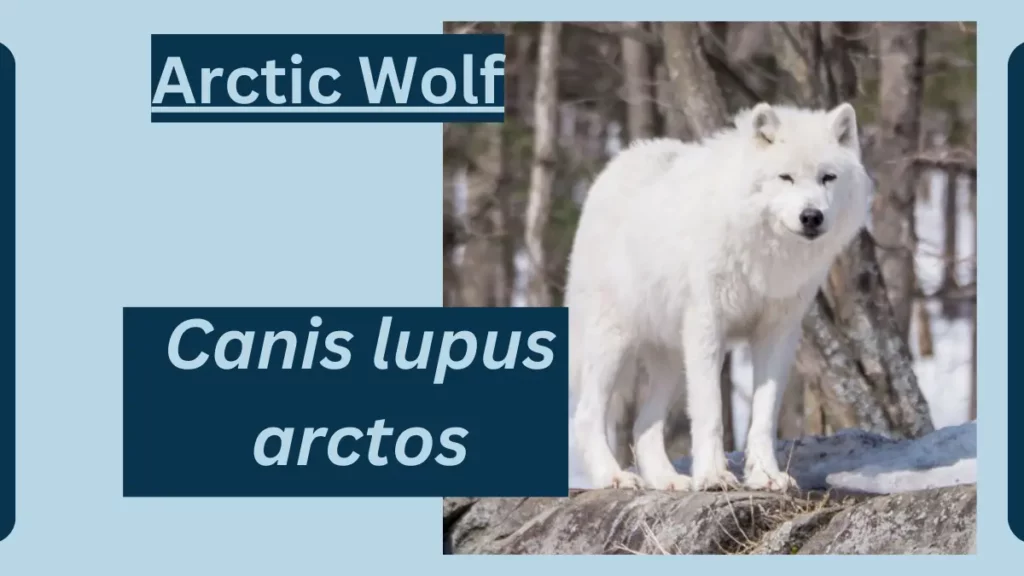Arctic Wolf Animal Facts
October 13, 2023
The Arctic Wolf, scientifically known as Canis lupus arctos, is a subspecies of the gray wolf (Canis lupus) adapted to thrive in the harsh Arctic conditions of the North American and Greenland tundra.

Arctic Wolf
Here are some facts about Arctic Wolf:
| Topic | Information |
|---|---|
| Scientific Classification | – Kingdom: Animalia |
| – Phylum: Chordata | |
| – Class: Mammalia | |
| – Order: Carnivora | |
| – Family: Canidae | |
| – Genus: Canis | |
| – Species: Canis lupus | |
| – Subspecies: Canis lupus arctos (Arctic Wolf) | |
| Habitat and Range | Arctic Wolves are primarily found in the Arctic regions of North America, including parts of Canada and Greenland. They inhabit vast tundra and frozen landscapes. |
| Mammal’s Anatomy and Adaptations | Physical Characteristics: Arctic Wolves have a thick, white coat that provides insulation in cold temperatures. Their fur may also have a slight bluish or grayish tint. They have smaller ears and shorter legs than their relatives, which help conserve heat. |
| Size: They are medium to large-sized canids, typically weighing between 70 to 125 pounds (32 to 57 kilograms) and measuring about 2.5 to 3.5 feet (0.76 to 1.07 meters) in length, not including the tail. | |
| Behavior and Lifestyle | Arctic Wolves are social animals and often form packs, working together to hunt for prey like muskoxen, Arctic hares, and caribou. They are known for their cooperation and communication within the pack. |
| Reproduction and Life Cycles | They reproduce sexually, with alpha pairs within the pack leading the breeding. The gestation period is around 63 days, and a litter typically consists of 4 to 7 pups. |
| Diet and Prey | Their diet consists of various Arctic mammals, primarily herbivores, and scavenging carrion. They are skilled hunters that work together to take down large prey. |
| Predators and Threats | While adult Arctic Wolves have few natural predators, wolf pups are vulnerable to larger carnivores like polar bears and golden eagles. Climate change, habitat loss, and hunting pose significant threats. |
| Interesting Facts and Features | Fur Color: Unlike their gray wolf relatives, Arctic Wolves have a pure white coat, which helps them blend into the snowy landscape of their habitat. |
| Endurance: These wolves are well-adapted to the Arctic’s extreme conditions, with thick fur, padded feet, and the ability to withstand extremely cold temperatures. | |
| Relationship with Humans | Arctic Wolves have had limited interactions with humans due to their remote habitat. They are not typically domesticated and are primarily observed by scientists and researchers studying their behavior and ecology. |
| Conservation Status and Life Today | Arctic Wolves, like many other wolf subspecies, face threats related to habitat loss and hunting. Conservation efforts are essential to protect their fragile Arctic ecosystem and the biodiversity it supports. |
File Under:






Leave a Reply